By Bob Hicks
That quotation comes from Claudia Dreifus’s interview in this morning’s New York Times with Ellen Bialystok, a cognitive neuroscientist who’s spent almost 40 years studying the ways that speaking two languages keeps your mind sharp, even possibly delaying the onset of Alzheimer’s symptoms. (Does that mean that Europeans and Quebecois are smarter longer than most Americans?)
 It strikes Mr. Scatter that what Bialystok has to say about research is equally true for that branch of creativity we like to refer to as artistic. An idea takes hold. You follow it. It leads you somewhere that might utterly astonish you. But once you’ve identified it, you need to trust it to lead you where it will. It’s not blind faith. But it is faith. Which doesn’t mean it won’t sometimes lead you down a dark alley for an artistic mugging. But those are the chances you take.
It strikes Mr. Scatter that what Bialystok has to say about research is equally true for that branch of creativity we like to refer to as artistic. An idea takes hold. You follow it. It leads you somewhere that might utterly astonish you. But once you’ve identified it, you need to trust it to lead you where it will. It’s not blind faith. But it is faith. Which doesn’t mean it won’t sometimes lead you down a dark alley for an artistic mugging. But those are the chances you take.
That’s all, folks: Meanwhile, Mr. Scatter has a story in this morning’s Oregonian about the Oregon Jewish Museum‘s new show That’s All, Folks: The Mel Blanc Story, celebrating the life and times of the Portland kid who grew up to be possibly the greatest Hollywood voice actor of all time, supplying the sounds of cartoon characters ranging from Bugs Bunny to Pepe LePew.
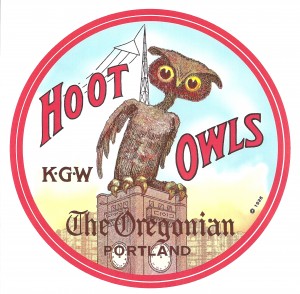 Blanc made a name for himself in Portland radio with shows such as KGW’s Hoot Owls (it was a huge hit in the 1920s and early ’30s, drawing audiences of more than a million a show) before heading for Hollywood and cartoon immortality. Blanc was far more than bilingual: He spoke in about 400 different character voices, which, as Ellen Bialystok might have predicted, kept him alert and peppy until he died at age 81 in 1989.
Blanc made a name for himself in Portland radio with shows such as KGW’s Hoot Owls (it was a huge hit in the 1920s and early ’30s, drawing audiences of more than a million a show) before heading for Hollywood and cartoon immortality. Blanc was far more than bilingual: He spoke in about 400 different character voices, which, as Ellen Bialystok might have predicted, kept him alert and peppy until he died at age 81 in 1989.
One story goes that after a string of successes he asked his bosses at Warner Bros for a raise. No can do, they told him: We can’t afford it. So he asked that he be given a nameline in the credits and they said sure. That’s how he became the first voice actor to be featured in a cartoon’s credits, paving the way for the likes of Jack Black, Eddie Murphy and Robby Benson, the onetime teen heartthrob who revealed big-league Broadway chops as the voice of Beast in Disney’s Beauty and the Beast.
So: No money, but you can have a byline? Sounds like blogging.
*
- Mel Blanc gives himself a close shave for a KGW radio gig. Photo courtesy of Noel Blanc.
- Logo for the radio hit “Hoot Owls,” which featured Blanc. Courtesy Mark Moore, NW Vintage Radio Society.
 Todd Stephen
Todd Stephen
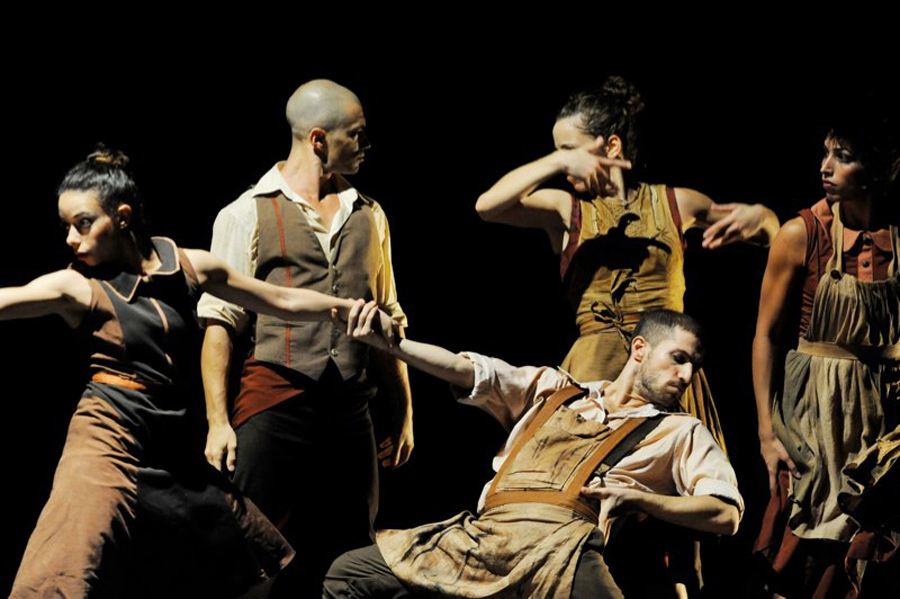 Gadi Dagon
Gadi Dagon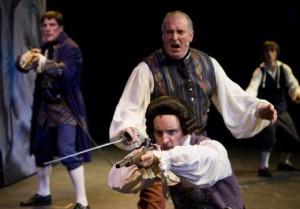 Jim was a terrific character actor, a good musician, an assured comedian with dramatic chops who could move with ease from the likes of David Mamet’s American Buffalo (which he performed years ago with the late, great Peter Fornara) to small-scale musicals like Pump Boys and Dinettes to a lot of kids’ shows, including his memorable turn as Smee in Peter Pan.
Jim was a terrific character actor, a good musician, an assured comedian with dramatic chops who could move with ease from the likes of David Mamet’s American Buffalo (which he performed years ago with the late, great Peter Fornara) to small-scale musicals like Pump Boys and Dinettes to a lot of kids’ shows, including his memorable turn as Smee in Peter Pan. 

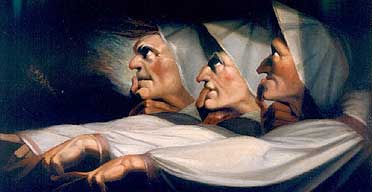
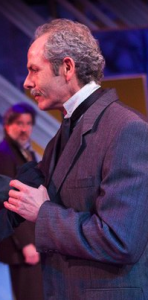 After all these years in Portland as one of the city’s best and busiest actors, Mendelson is still an industrial Midwest big city boy in certain inalienable ways, including his appetite for honest-to-god deli food, which you can’t much get around here except at oases like Kornblatt’s and
After all these years in Portland as one of the city’s best and busiest actors, Mendelson is still an industrial Midwest big city boy in certain inalienable ways, including his appetite for honest-to-god deli food, which you can’t much get around here except at oases like Kornblatt’s and ![Title page of the First Folio, by William Shakespeare, with copper engraving of the author by Martin Droeshout. Image courtesy of the Elizabeth Club and the Beinecke Rare Book & Manuscript Library, Yale University. [1] Date 1623(1623) Source Beinecke Rare Book & Manuscript Library, Yale University [2] Author William Shakespeare; copper engraving of Shakespeare by Martin Droeshout Title page of the First Folio, by William Shakespeare, with copper engraving of the author by Martin Droeshout. Image courtesy of the Elizabeth Club and the Beinecke Rare Book & Manuscript Library, Yale University. [1] Date 1623(1623) Source Beinecke Rare Book & Manuscript Library, Yale University [2] Author William Shakespeare; copper engraving of Shakespeare by Martin Droeshout](http://www.artscatter.com/wp-content/uploads/2011/05/title_page_william_shakespeares_first_folio_1623-189x300.jpg) First, Mr. Scatter has been talking of late with the talented actor Michael Mendelson, who is deep in the process of preparing for the first production of his new company, the
First, Mr. Scatter has been talking of late with the talented actor Michael Mendelson, who is deep in the process of preparing for the first production of his new company, the  Portland Taiko. Rich Iwasaki/2009
Portland Taiko. Rich Iwasaki/2009 There isn’t much story to The Cherry Orchard, but there are themes, counter-themes, motifs. It’s chamber music, and the way we hear it can be startlingly different from production to production, depending not just on our own life experiences (interpreting Chekhov relies to an extreme on what the audience brings to it) but also on the emphases of interpretation on the stage: Do we concentrate on the cello tonight, or the bassoon? In truth, I suspect that even more so than ordinarily, every member of the audience sees a different play when watching Chekhov.
There isn’t much story to The Cherry Orchard, but there are themes, counter-themes, motifs. It’s chamber music, and the way we hear it can be startlingly different from production to production, depending not just on our own life experiences (interpreting Chekhov relies to an extreme on what the audience brings to it) but also on the emphases of interpretation on the stage: Do we concentrate on the cello tonight, or the bassoon? In truth, I suspect that even more so than ordinarily, every member of the audience sees a different play when watching Chekhov.